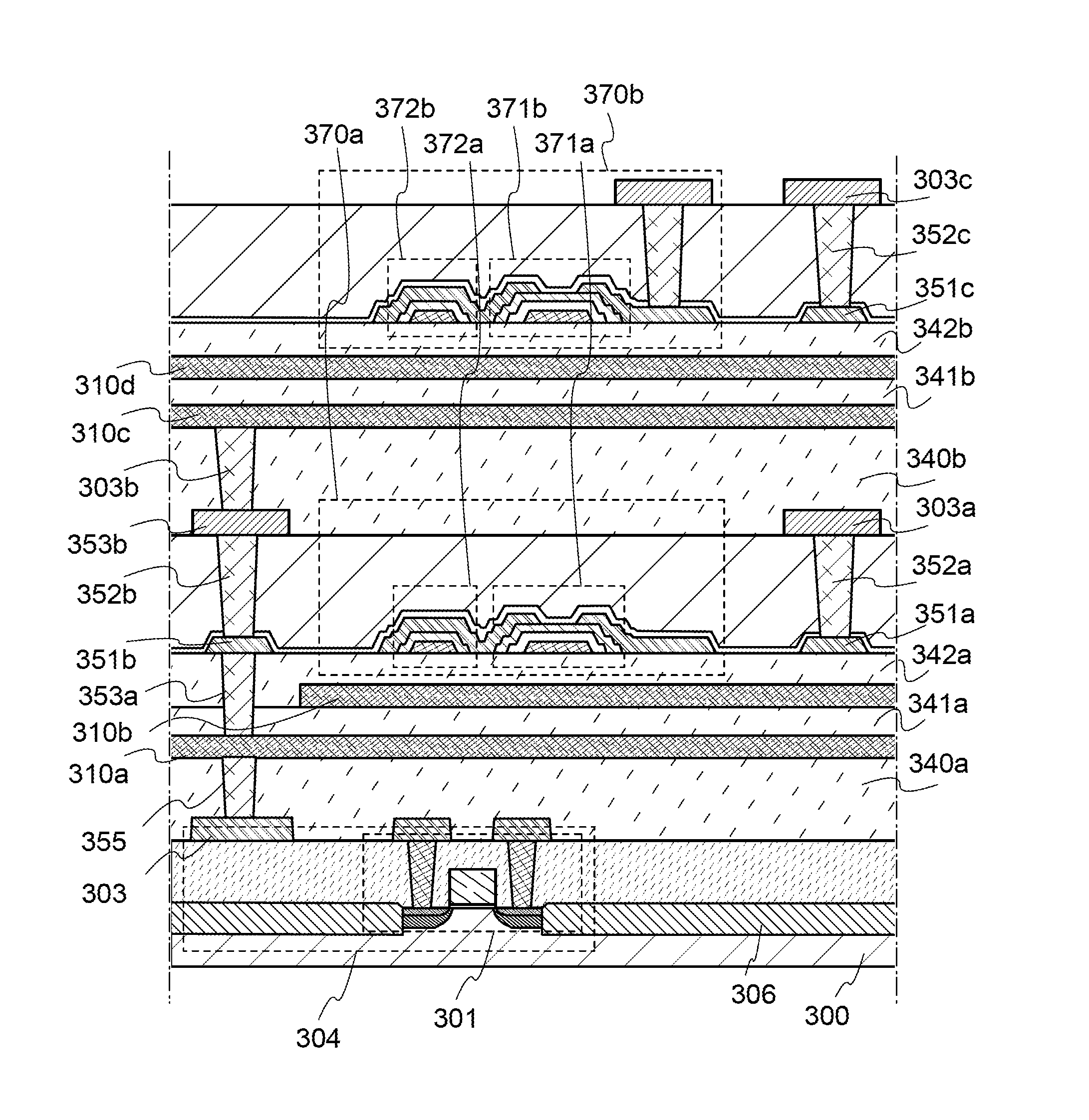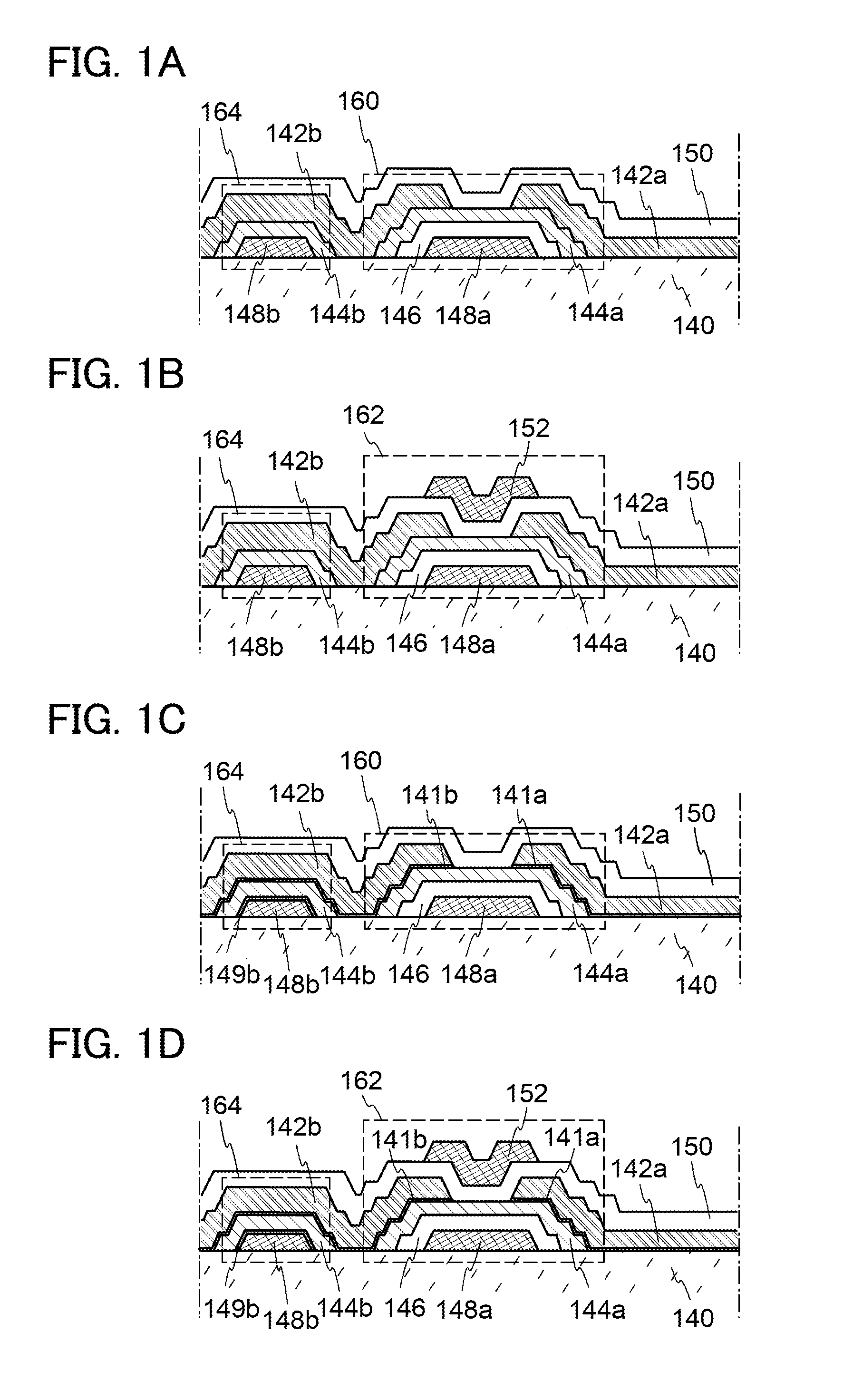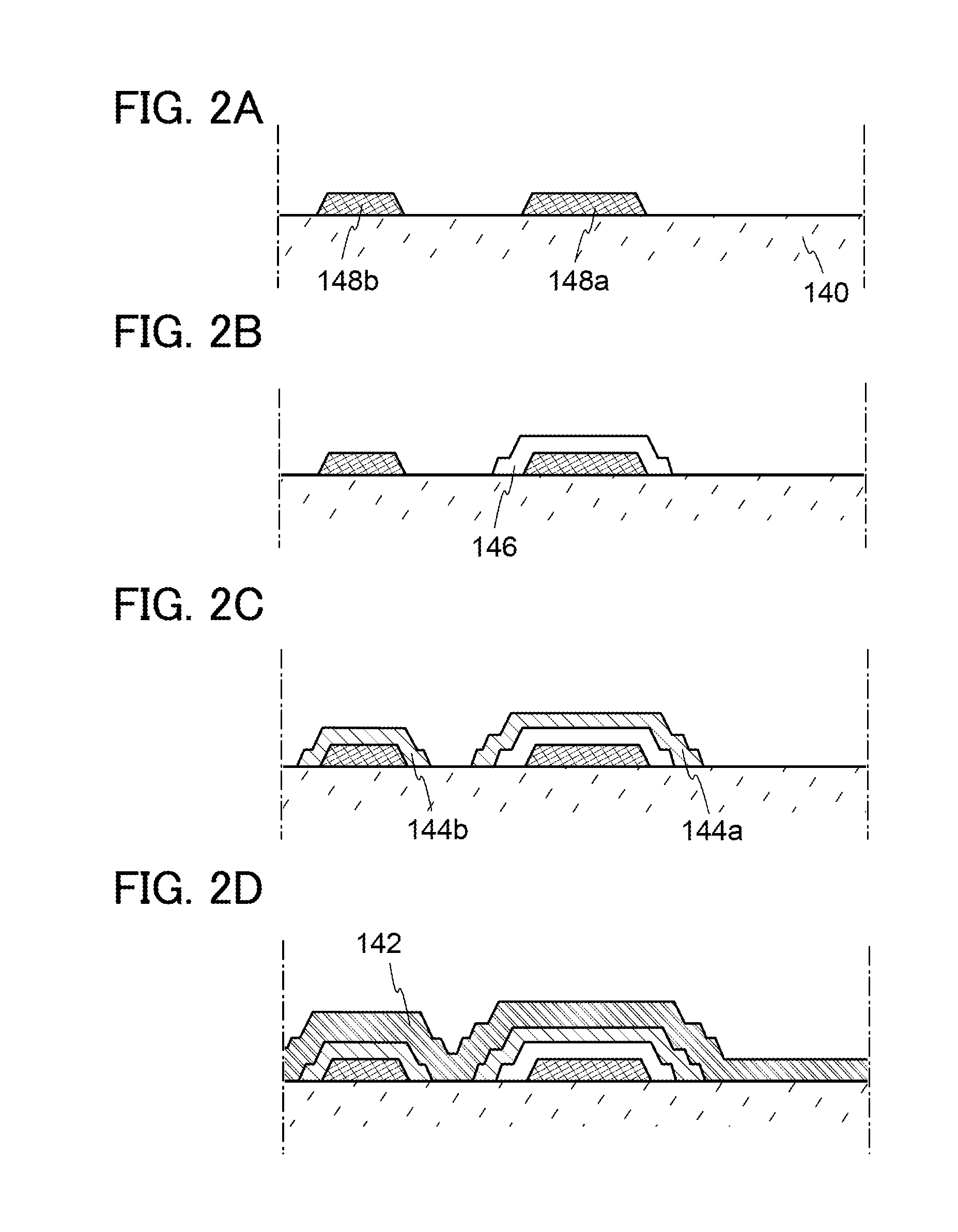Semiconductor device and manufacturing method thereof
a technology of semiconductors and semiconductors, applied in the direction of solid-state devices, transistors, climate sustainability, etc., can solve the problems of increasing the cost per storage capacity, short data holding period, and difficulty in sufficiently reducing power consumption
- Summary
- Abstract
- Description
- Claims
- Application Information
AI Technical Summary
Benefits of technology
Problems solved by technology
Method used
Image
Examples
embodiment 1
[0057]In this embodiment, a structure and a manufacturing method of a semiconductor device according to one embodiment of the present invention will be described with reference to FIGS. 1A to 1D, FIGS. 2A to 2D, and FIGS. 3A to 3C.
[0058]FIGS. 1A to 1D are structure examples of semiconductor devices. FIGS. 1A to 1D illustrate cross sections of the semiconductor devices. The semiconductor devices shown in FIGS. 1A and 1C each include a transistor 160 whose channel formation region includes an oxide semiconductor and a capacitor 164 whose dielectric includes an oxide semiconductor. The semiconductor devices shown in FIGS. 1B and 1D each include a transistor 162 whose channel formation region includes an oxide semiconductor and the capacitor 164 whose dielectric includes an oxide semiconductor.
[0059]Although all the transistors are described as n-channel transistors here, it is needless to say that p-channel transistors can be used. Since the technical nature of the disclosed invention ...
embodiment 2
[0159]In this embodiment, a structure and a method of manufacturing a semiconductor device, which are different from those of Embodiment 1, will be described with reference to FIGS. 4A and 4B, FIGS. 5A to 5D, FIGS. 6A to 6C, FIGS. 7A and 7B, and FIGS. 8A to 8D.
[0160]FIGS. 4A and 4B are structural examples of a semiconductor device. FIGS. 4A and 4B illustrate cross sections of the semiconductor device. The semiconductor devices shown in FIGS. 4A and 4B each include the transistor 160 whose channel formation region includes an oxide semiconductor and the capacitor 164 whose dielectric includes an oxide semiconductor.
[0161]The transistor 160 in FIG. 4A includes the source or drain electrode 142b and the drain or source electrode 142a which are provided over the insulating layer 140; the first oxide semiconductor layer 144a over and electrically connected to the source or drain electrode 142b and the drain or source electrode 142a; the gate insulating layer 146 covering the first oxide ...
embodiment 3
[0229]In this embodiment, an example of a memory cell 170 including the semiconductor devices in Embodiment 1 and Embodiment 2 will be shown with reference to FIGS. 9A to 9C.
[0230]FIG. 9A is a cross-sectional view of the memory cell 170. FIG. 9B is a top-view of the memory cell 170. FIG. 9C is a circuit diagram of the memory cell 170.
[0231]FIGS. 9A and 9B corresponds to the semiconductor device of FIG. 1A; however, this embodiment is not limited thereto. Any of the semiconductor devices of FIGS. 1A to 1D, FIGS. 3A to 3C, and FIGS. 4A and 4B can be used, and alternatively, another semiconductor device with a function similar to the structure of the semiconductor devices can be used.
[0232]The memory cell 170 of FIGS. 9A to 9C includes the transistor 160 and the capacitor 164.
[0233]In the memory cell 170 of FIG. 9A, the drain or source electrode 142a of the transistor 160 is electrically connected to a wiring 156 through an opening in the insulating layer 150 and an insulating layer 15...
PUM
| Property | Measurement | Unit |
|---|---|---|
| energy gap Eg | aaaaa | aaaaa |
| work function | aaaaa | aaaaa |
| work function | aaaaa | aaaaa |
Abstract
Description
Claims
Application Information
 Login to View More
Login to View More - R&D
- Intellectual Property
- Life Sciences
- Materials
- Tech Scout
- Unparalleled Data Quality
- Higher Quality Content
- 60% Fewer Hallucinations
Browse by: Latest US Patents, China's latest patents, Technical Efficacy Thesaurus, Application Domain, Technology Topic, Popular Technical Reports.
© 2025 PatSnap. All rights reserved.Legal|Privacy policy|Modern Slavery Act Transparency Statement|Sitemap|About US| Contact US: help@patsnap.com



